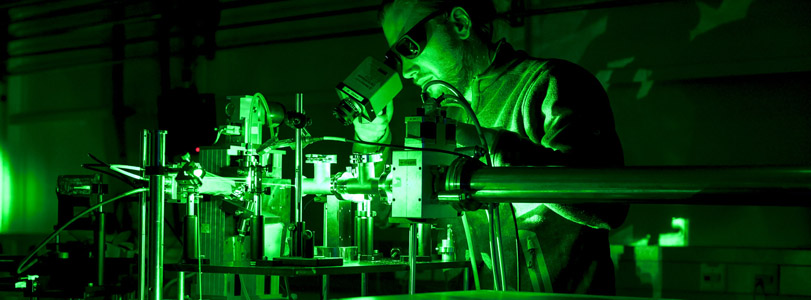X-ray laser records “dance” of electrons and atoms
Using an X-ray free-electron laser, researchers have observed for the first time the fastest steps of how electrons move within and between molecules.
During chemical and biological reactions, electrons move extremely fast and thereby influence the structure of the molecules involved. This interaction between electrons and their host atoms is not only fundamentally important, but also determines the efficiency of many devices, such as sunlight-to-energy converters, which are currently being developed for dye-sensitized solar cells. So far, however, these processes have been too fast to be observed directly. Now an international team of researchers, including scientists from European XFEL, succeeded in studying the early events of a light-driven reaction at the Linac Coherent Light Source (LCLS), an X-ray free-electron laser at SLAC National Accelerator Laboratory in Menlo Park, California. The results were published in January in The Journal of Physical Chemistry A. They provide unique insights into the elementary processes of chemical reactivity, but also serve to further improve the design of the scientific instruments at the European XFEL.

Using X-ray absorption spectroscopy with hard X-ray radiation for the first time at a free-electron laser, the scientists observed rapid spin switching in a collection of molecular samples. In X-ray absorption spectroscopy, researchers are interested in which X-ray wavelengths of a spectrum are absorbed by a sample, because this provides information about the sample’s electronic properties and molecular structure. The technique, which has been extensively used at synchrotron light sources for years, appeared quite challenging to implement at LCLS since the free-electron laser’s spectrum varies strongly from pulse to pulse. But it is worth the effort: “The superior time resolution at free-electron lasers promises to capture the very early events during a chemical reaction, and the superior signal quality due to the unprecedented high X-ray flux available at FEL sources allows to obtain a razor sharp image of the ensuing dynamic processes”, said Christian Bressler, leading FXE instrument scientist at European XFEL. “This capability should allow scientists for example to understand and then optimize the efficiency of modern photovoltaic devices.” Wojciech Gawelda, a scientist in Christian Bresslers group, added: “Some of these experiments will be impossible to realize anywhere else. The results obtained at SLAC will be used to further improve the design of the FXE instrument, which is expected to help scientists to understand and tailor many chemical, biological, and technological processes much better than today.”
In the experiment, the researchers shone an ultrashort optical laser pulse on a flat sheet of flowing liquid containing a dissolved iron compound, which rearranges its electrons and changes its magnetic properties in an extremely short time. Eventually, the molecule changes its size by pushing the surrounding ligands slightly away. A few quadrillionths of a second (femtoseconds) after the optical laser pulse, they hit the same sample with ultrashort pulses of the LCLS’s X-ray laser beam to record the on-going changes. By repeating the experiment with different time spans between the optical and X-ray laser pulses, the scientists can record a movie of the reaction including its electronic and geometric structure changes.
“The success of this experiment comes very timely,” said Thomas Tschentscher, scientific director at European XFEL. “It proves the design of the FXE instrument at the European XFEL, which will serve as a versatile instrument for the scientific community for studying form and function in chemical and biological molecules.”
In addition to scientists from European XFEL and SLAC, the experiments also involved researchers from the Stanford PULSE Institute, Argonne National Laboratory and Northwestern University in Illinois, Technical University of Denmark, Korea Advanced Institute of Science and Technology (KAIST), and Inha University in South Korea.